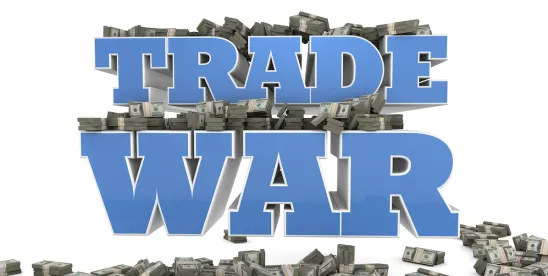Small business bankruptcies are about to surge, and tariffs are the match being lit. [i]
FTI Consulting’s CFO, Ajay Sabherwal, recently said that the recent uptick in FTI’s restructuring business is partly fueled by “tariff-induced” stress. Many consulting firms have already set up ‘tariff war rooms’ to help clients brace for what’s ahead. If this sounds eerily familiar to how firms scrambled to support clients during COVID-19, that’s because it is. I would not be surprised if law and accounting firms launch tariff-focused resource centers, just as they did with pandemic-related issues. Regardless, many US businesses will soon need more help than during COVID-19, but nothing like ERC or EIDL money will likely be in the offering.
Gary D. Cohn, IBM vice chairman and former director of the US National Economic Council, summed it up on Face the Nation a few weeks ago. Cohn explained that the full impact of the new tariffs is only a few weeks away, due to the typical eight-week shipping and distribution cycle:
“So what people need to understand is the cycle from a good being sold in China, loaded on a vessel, sailed across the ocean, unloaded in the United States, put in a factory, distributed to a shelf, is about eight weeks… [I]f you go back to the April 2nd date when the tariffs kicked in… we’re a few weeks away from… see[ing] the early effects of what will happen in the transportation of goods… [Toy stores typically order] their toys for Christmas today [but] those toys are now coming with a massive 145% tariff. The vast majority… cannot order toys today because they cannot afford the 145% tariff. So… they’re either going out of business or they’re just going to wait and see what happens.”
Yes, Cohn was talking about toys. But swap out ‘toys’ for just about anything else, and the story is the same. Retailers. Manufacturers. Distributors. Logistics companies. The effects will ripple quickly.
The bottom line: If tariffs remain at their current levels, and if no meaningful adjustments are made soon, we are about to see a wave of business distress and bankruptcies that makes the recent pickup in restructuring work look like a warm-up act. [ii]
Editors’ Note: This article is based in substantial part on an article that was published on LinkedIn on 4/29/25. This article is subject to the disclaimers found here.
Footnotes
[i] While no business is thrilled about a 145% tariff, not all businesses are equally equipped to weather the storm. Big companies can hedge currency exposure, renegotiate supplier contracts at scale, shift production to other countries, or pass costs along to customers with clever pricing strategies. Small businesses? Not so much.
Small business owners don’t have trade compliance departments or international logistics teams. They often lack the cash reserves, the borrowing capacity, or the leverage to get sweetheart deals from suppliers. And unlike their larger competitors, they don’t have the luxury of absorbing costs or ‘waiting it out.’ For many, the choice is stark: pay the tariff and lose money or stop ordering and lose customers. Either path leads to distress. One path just takes longer to get there.
A potent tool for struggling companies is Subchapter V of Chapter 11 of the Bankruptcy Code. Read “Subchapter V of Chapter 11: A User’s Guide” for a summary.
[ii] I don’t intend this to be political, nor do I think the impact is entirely bad. US consumer spending, for example, increased in March and early April, with people front-loading purchases in anticipation of coming price hikes. And if there is one thing the White House has proven, it can cause significant economic shifts by dominating the news. If it starts to behave more predictably, I think most negative effects can be short-lived.
However, as a friend said to me, it “seems like the impact on shipping, trucking, warehousing, and logistics will be nearly immediate.” Indeed, leaving the big boys (Fed Ex, UPS, etc.) aside, the last-mile delivery industry alone includes thousands of companies, ranging from small local courier services to larger regional logistics firms. And the recent increased demand on supply chain players caused by increased buying in advance of the tariffs’ impact will be short-lived. FedEx and UPS have both, for example, announced layoffs, due in part to the uncertainty created by the tariff situation. I’m not suggesting the impact will be catastrophic, but there likely will be fallout among weaker competitors.




 />i
/>i

